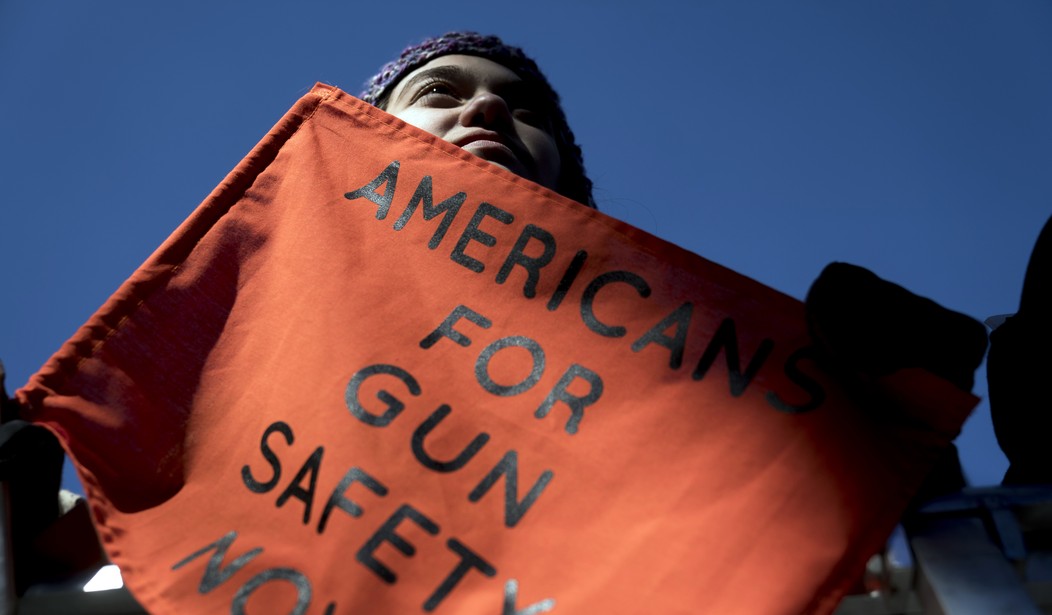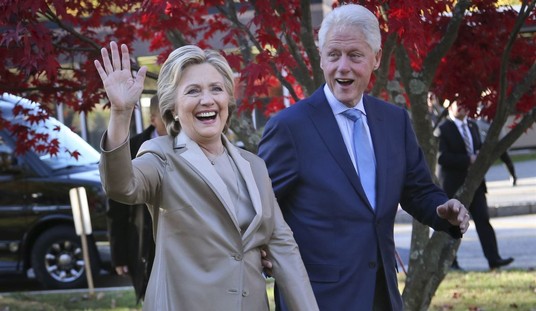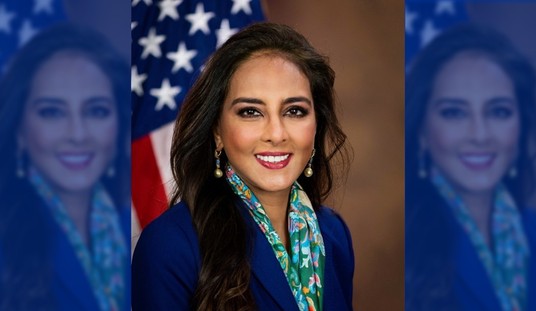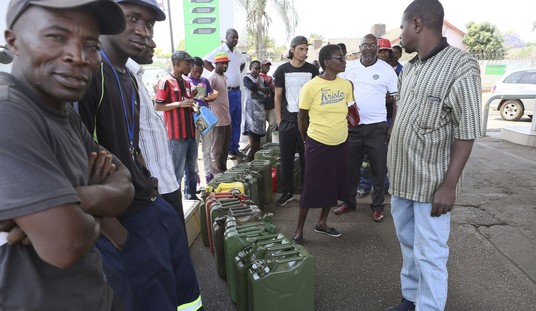As I covered, the long-awaited text of a bipartisan gun bill was released Tuesday evening, and boy, is it a doozy. But can we even call it a gun bill? As our Joe Cunningham noted, it’s all handouts related to Medicare/Medicaid and school mental health programs until page 25.
Senators managed to fit a lot of terrible ideas and, not surprisingly, billions of dollars in new funding (origin unknown) to DOJ, DHHS, and the Department of Education to be used for loosely-defined purposes.
In addition to the issues noted in my prior piece related to what is being billed as increased mental health funding, here are my top four problems with the bill… and a “be on the lookout” warning from someone who’s been through this entire rodeo in California and who knows a thing or two about how gun control groups work.
1. It provides funding for “red flag” laws with too-broad latitude for state interpretation and insufficient safeguards.
The portion of the bill pertaining to so-called red flag laws is extremely vague — as in, nearly nonexistent. It provides an additional $750 million in Byrne JAG grants – to the states to be used for “crisis intervention programs,” including “extreme risk protection order programs.”
Over the last month there’s been intense public discussion about the specifics of red flag laws and what due process safeguards are or are not in place and what changes should possibly be entertained, and that discussion intensified over the last week. Apologists explained them thusly, claiming they still “require due process” and that “any removal of weapons is temporary.”
Red flag laws allow us to take action when someone who has a gun begins to act erratically.
Red flag laws still require due process, and any removal of weapons is temporary. pic.twitter.com/IVPHgbrvhD
— Governor Tom Wolf (@GovernorTomWolf) June 16, 2022
Given the level of interest and ongoing discussions, one would think the bill would contain specific actions that would possibly subject one to the issuance of an Extreme Risk Protection Order, the type of evidence required, at which point a person would be notified of an attempt to remove their Second Amendment rights, whether legal counsel would be afforded, the length of time any such order would be in effect, and if the order automatically expired or if the person had to petition the court to have their rights restored. At a minimum.
Nope. None of the above. The bill simply states that ERPO programs must, “at a minimum” provide due process protections to both pre-deprivation and post-deprivation ensure that one’s constitutional rights aren’t violated (with a lot of other legalese in there), and must include “at the appropriate phase to prevent any violation of constitutional rights…the right to an in-person hearing, an unbiased adjudicator, the right to know opposing evidence, the right to present evidence, and the right to confront adverse witnesses; the right to be represented by counsel at no expense to the government.”
Do you see the problems there? People assume that language to mean that a person will have the right to know the evidence against them, to confront their accuser/adverse witnesses, et cetera, before they’re stripped of their rights. That is not what that language means. A court can still decide to have an ex parte hearing, and the quantity and types of evidence the Respondent (the civil version of Defendant) can present. And if you can’t afford an attorney, how can you effectively represent yourself? There are no specifics to guide judges, period, in that bill.
I’ll be going into much more detail about what this vagueness means for your fundamental rights in a separate piece, but suffice it to say that the scenario presented by Firearms Policy Coalition in the tweet below is fully consistent with the bill’s language.
GOP Leadership in the US Senate just endorsed a plan that will allow even more Karens to have this power.
Fight back at https://t.co/LjT5lXUI6d pic.twitter.com/gEQA9VsRL8
— Firearms Policy Coalition (@gunpolicy) June 22, 2022
For some scary reading about what might be on the horizon, read about California’s Gun Violence Restraining Orders here – and pay close attention to the categories of people who can request them.
2. Expanded Definition of “Engaged in the Business” for Federal Firearms Licensees
Under this bill, if you occasionally sell a gun in a private transaction and you do it for a profit (not many people do it for a loss), you must register to become a Federal Firearms Licensee – which is not an easy or inexpensive thing to achieve, much less maintain. So if you’re not trying to liquidate your collection but just want to make some money, you could run into a problem. Of course, the interpretation is up to the regulators or the judge — and most likely the individual citizen isn’t going to end up on the winning end of that interpretation.
Cool, the senate wants the possibility of criminal transactions for occasional private sales if you did it for a profit. pic.twitter.com/ViXnchn3ke
— Matthew Larosiere (@MattLaAtLaw) June 22, 2022
But hey, if you’re selling guns for criminal purposes or terrorism, don’t worry about registering as an FFL.
3. Five-year prohibition for misdemeanor “domestic violence” conviction
This component is billed as “eliminating the ‘boyfriend’ loophole,” which is pretty sexist and assumes gender and seems to completely dismiss violence in lesbian relationships, but I digress. First, there is no “boyfriend” loophole in the way most people would understand it – just like there’s no “gun show loophole.” As explained by NRA-ILA, case law has pretty well eviscerated the meaning of “violence” in domestic violence convictions, and the expansion of the definition of “domestic” to include “dating partners,” a term that the vast majority of people in the dating pool have difficulty defining anyway, will create huge enforcement issues:
Extending MCDV prohibition offenses to “dating partners,” a broad, vague term that involves none of the interdependence that purportedly justified the original prohibition, is a clear example gun control opponents’ attempts to vastly expand the list of Americans prohibited from possessing firearms.
The idea that there are “loopholes” for domestic violence perpetrators are false. The legal and criminal justice systems have the necessary tools to prohibit dangerous individuals from possessing firearms – including prosecuting felonious level conduct as a felony.
And, as we all know, felony convictions create prohibited persons. But that doesn’t go along with the “justice reform” agenda, does it?
4. A massive expansion of federal law enforcement and the Byrne JAG program in scope and dollars
This bill is a huge giveaway to the Department of Justice and the FBI, neither of which are concerned with protecting the civil rights of law-abiding gun owners. Again, no word on where this funding is coming from. Here’s how the $1.5 billion allocated to the DOJ is divvied up:
- $100 million to the FBI for “salaries and expenses…to meet additional resource needs of the National Instant Criminal Background Check System”
- $1.4 billion to the Department of Justice for “State and Local Law Enforcement Assistance,” $750 million of which is earmarked for Byrne JAG grants and $100,000,000 is earmarked “for competitive grants to be administered by the Community Oriented Policing Services Office for purposes authorized under the STOP School Violence Act of 2018”
As you can see, half of that amount goes to additional Byrne grants… and in the earlier part of the bill explaining “crisis intervention programs” there’s a troubling addition to the definition of how those grant funds can be used, namely, that they can be used for “civil proceedings” and not just criminal justice-related activities.
Does it bother anyone that the Byrne Justice Assistance Grant (JAG) program is being greatly expanded in the Senate gun bill? If it passes, those grant funds can be used for "civil proceedings" and adds a catch-all "including, but not limited to" category… pic.twitter.com/ZleeJQjMlq
— Jennifer Van Laar (@jenvanlaar) June 22, 2022
And, while the crisis intervention “court proceedings and related programs or initiatives” include four listed programs (mental health courts, drug courts, veterans courts, and extreme risk protection order programs), that sneaky “including, but not limited to” language is at the end — meaning that other programs that lobbyists at the state level come up with (perhaps related to defunding the police) can be implemented with these grant funds.
Maybe an enterprising conservative can use “civil proceedings” and “drug courts” to compel homeless drug addicts to participate in inpatient treatment? Just an idea… and one that the gun control lobby probably wasn’t thinking of.
Be on the Lookout for…
Groups like Moms Demand, Everytown, the Brady Center, and the Giffords Law Center will position themselves as “experts” with “science-backed” or “data-backed” positions and policies and suggest full “red flag law” verbiage to selected legislators in state capitols throughout the country. That’s been their modus operandi for years, and now that they know there’s hundreds of millions of dollars in federal funding available, they’ll ratchet it up.
This “data” will come from places like the University of California’s Firearm Violence Research Center, which was established (essentially as a no-bid contract award) by the California legislature in 2017, a few years after the state’s first red flag laws went into effect. California law requires that raw data from the California Department of Justice relating to GVRO’s be fed directly to the center, whose lead researcher, Dr. Garen Wintemute, is darling of the gun control lobby. That same law prohibits the release of the raw data to anyone but allows “other entity that is concerned with the study and prevention of violence, as specified, for academic and policy research purposes,” to petition CADOJ for the data, which CADOJ may release “in its discretion.” And, the data can only be used for “academic and policy research analysis.” So, you can be sure that the data will not end up in objective researchers’ hands. Watch out for similar state-based “research” proposals to be put forward in conjunction with the red flag laws. After all, the Byrne JAG program requires the states to prove the efficacy of their crisis intervention programs.
This bill is everything the gun control lobby has been praying for, for decades, Instead of fighting a federal red flag law proposal, people in every single state (not just those controlled by progressives) will be fighting disparate proposals simultaneously. Get ready.
(EDITOR’S NOTE: Due to technical issues, the initial publication of this article omitted parts of the last three paragraphs. We apologize for the error.)














Join the conversation as a VIP Member